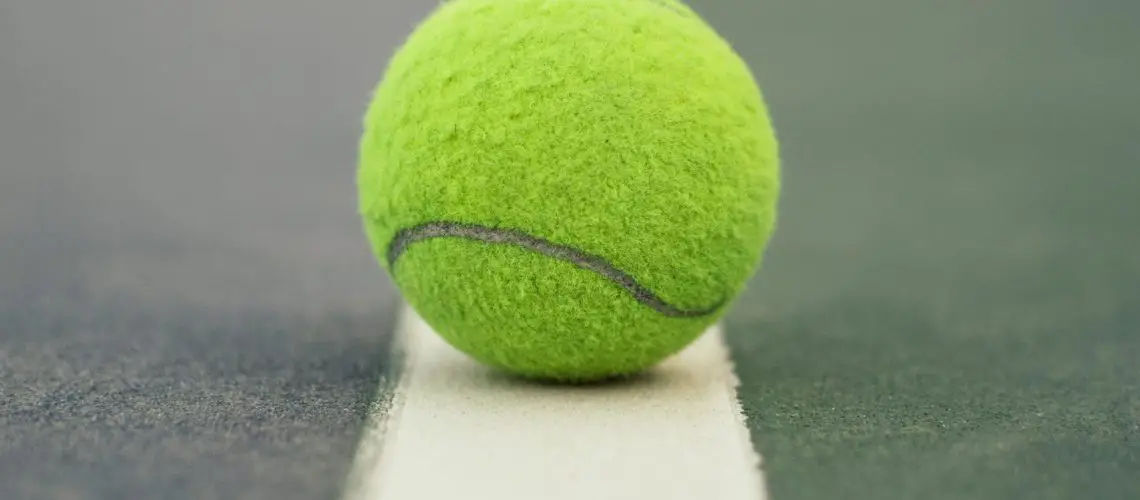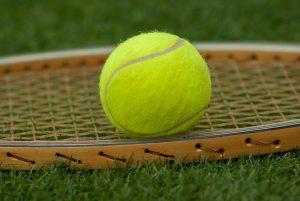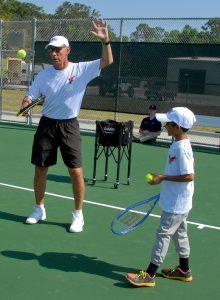We may earn money or products from the companies mentioned in this post.
Introduction to Tie Breakers in Tennis

Tennis, a sport known for its intense rallies and epic matches, often encounters scenarios where players find themselves tied at the end of a set In such cases, a tie breaker comes into play A tie breaker is a unique scoring system that allows players to settle the score when the set reaches a specific point threshold It adds excitement and unpredictability to the game, making it even more thrilling for players and spectators alike
The Definition of a Tie Breaker
A tie breaker is essentially an extra game played within a tennis set when both players or teams have won an equal number of games Instead of continuing with regular game scoring, where one player must win by two games, the tie breaker introduces a different set of rules It aims to expedite the process while maintaining fairness and ensuring that one player emerges as the winner of the set
The Importance and Role in Tennis Matches
Tie breakers play a crucial role in tennis matches by providing an efficient way to determine the winner of a set when both competitors are evenly matched Without this mechanism, sets could potentially go on indefinitely until one player manages to secure a two-game advantage over their opponent
The introduction of tie breakers has significantly enhanced spectator experiences as well By compressing the final stages of a set into just seven points or less (depending on the rules), tie breakers intensify pressure situations and fuel nail-biting excitement among fans watching from courtside or around the world
Brief History of Tie Breaker System
The concept of tie breakers was first introduced in 1970 as an innovative solution to prolonged sets that hindered scheduling and disrupted tournament timetables The Association of Tennis Professionals (ATP) and the International Tennis Federation (ITF) agreed upon the implementation of the tie breaker system to ensure matches could be completed within a reasonable time frame
Initially, tie breakers were commonly used to decide the outcome of final sets in tournaments However, over time, they have become an integral part of tennis matches and are now played at the end of every set, except for the final set in Grand Slam tournaments, which often follows different rules
The evolution of tie breakers has seen various formats being used throughout history From point-based systems to game-based systems, tennis authorities have continuously refined and tweaked the rules to strike a balance between maintaining competitive fairness and keeping matches captivating for players and spectators alike
Rules and Scoring in Tie Breakers

Tennis matches are filled with suspense and excitement, especially when players find themselves in a tie breaker But when does a tie breaker come into play? Typically, a tiebreaker is played when the set score reaches 6-6, although specific events may have different requirements Additionally, tiebreakers are often used in championship match situations to determine the winner
Basic Scoring Rules for a Tie Breaker
In a tie breaker, the scoring system takes on a slightly different format Instead of traditional game scoring, players compete using a point-based system The first player to reach seven points is declared the winner, but there’s a catch – they must also win by two points
Another important aspect of the tie breaker is alternating service turns It starts with one player serving the initial point (often determined by a coin toss), and from there on, the service alternates every two points This ensures fairness and equal opportunities for both players
To add another layer of fairness, players switch ends after every six points played This helps equalize any potential advantages or disadvantages due to factors such as wind or sun direction
Specific Variations in Tie Breaker Rules
While there are generally accepted rules for tiebreakers, variations can exist across tournaments or levels of play One example is the distinction between traditional tiebreakers and super tiebreakers
A traditional tiebreaker follows the point-based scoring system mentioned earlier, where players aim to reach seven points while winning by two On the other hand, a super tiebreaker has its own unique rules; usually played in doubles matches or as an alternative format for deciding sets in certain events
Furthermore, specific events may implement different scoring systems altogether For instance, some tournaments may use a modified tiebreaker format where players compete to reach ten points instead of seven
Understanding the rules and scoring in tiebreakers adds an extra layer of excitement to tennis matches From the moment the set score reaches 6-6 to the final point won by two, every aspect of the tiebreaker keeps players and spectators on their toes, eagerly awaiting each serve and rally
Strategies and Techniques for Winning Tie Breakers

Mental preparation and focus
When it comes to tie breakers, mental preparation and focus play a crucial role in determining the outcome Staying calm under pressure is of utmost importance By keeping a cool head, you can make better decisions, maintain clarity of thought, and execute your shots with precision
In addition to staying calm, it’s essential to maintain confidence throughout the tie breaker Confidence acts as a fuel that drives your performance Believe in your abilities and trust your training Remember past successes and let them boost your self-assurance on the court
Developing an effective serve strategy
Your serve can be a game-changer during tie breakers Placing emphasis on the success rate of your first serve is crucial A strong first serve not only puts pressure on your opponent but also sets the tone for the rest of the tie breaker
Furthermore, targeting your opponent’s weaknesses with your serve can give you a significant advantage Study their game beforehand and identify areas where they struggle or feel uncomfortable By exploiting these weaknesses with well-placed serves, you increase your chances of gaining the upper hand
Improving return skills to capitalize on opponent’s mistakes
The ability to capitalize on your opponent’s mistakes is vital in tie breakers To achieve this, it is important to recognize patterns and tendencies in their serve Pay attention to their preferred placement, speed, and spin variations
Additionally, adjusting your positioning based on your opponent’s serving style can make a substantial difference in returning their shots effectively By anticipating their serves and positioning yourself strategically, you increase the likelihood of making accurate returns that put them under pressure
Managing risks while playing aggressively
Playing aggressively in tie breakers can be a double-edged sword It’s important to find the right balance between taking calculated risks and minimizing unforced errors
One way to achieve this is by carefully choosing when to go for aggressive shots Assess the situation, consider your opponent’s weaknesses, and seize opportunities to attack when they arise However, always remember to maintain control and avoid reckless shots that could lead to unnecessary mistakes
Another aspect of managing risks is knowing when to attack the net or stay at the baseline This decision depends on your playing style, court position, and your opponent’s strengths and weaknesses Being able to make quick judgments during a tie breaker can give you the edge needed to secure victory
Common Questions About Tie Breakers In Tennis

How does switching sides affect players during a tie-breaker?
Switching sides during a tie-breaker can have a significant impact on players The change in position exposes them to different elements such as wind, sun, or court conditions It requires quick adaptation to the new surroundings and strategic adjustments to counter any challenges posed by these factors Players must stay focused and make necessary changes to their game plan to maintain their momentum
What happens if a player reaches seven points but the other player has six?
If one player reaches seven points while the other has six, the match is not yet over In a tie-breaker, players must win by a margin of two points instead of just one Play continues until one player achieves a two-point lead over their opponent This rule ensures that the match remains competitive and allows for potential comebacks even when one player is close to victory
How do doubles teams play tie breakers?
In doubles tennis, playing tie breakers requires coordination between partners in serving and returning Partners need to communicate effectively and strategize their shots accordingly to maximize their chances of winning points Additionally, doubles teams follow a specific order for serving throughout the tie breaker, rotating turns among team members according to predetermined rules or agreements
What are some famous matches with memorable tie breakers?
Tennis history is replete with classic matches that featured dramatic finishes in tie breakers These memorable moments showcase exceptional skill, mental fortitude, and determination from professional players facing intense pressure situations By studying these matches, aspiring tennis enthusiasts can learn valuable lessons about resilience, strategy, and maintaining composure under high-stakes circumstances
Useful Links

Standard Tiebreak for Tennis
How to Play a Tiebreaker, History, and More
Guide to Tennis Tie Breaks
Tie-Break Tennis Rules
Rules For Playing a 10 Point Tie Break
What is a super tiebreak in tennis, rules, points and how is it …
12-Point Tie-Break
Tennis | Rules and Equipment | Scoring basics: tie-break
How To Record A Tiebreak – Support – Universal Tennis
Tennis scoring system
Rules for Playing 10-Point Match Tiebreaker in Tennis
Tiebreaker rules and scoring system at the 2022 US Open
How to play a tiebreaker
Mixed Doubles Tennis Rules
Tennis final set tie-break rules explained: Why changes …
The COMAN Tiebreak Procedure:
What Is A Tie Break In Tennis?
What Is a Tiebreak in Padel?
What’s a Tennis Tiebreaker? How Do they Work?






